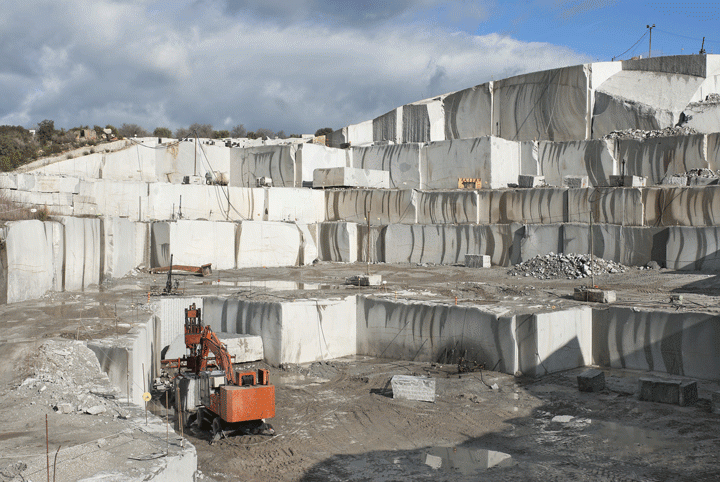Granite Quarries in South Africa Wonders: Checking Out the Quarry Landscape
Granite Quarries in South Africa Wonders: Checking Out the Quarry Landscape
Blog Article
Discovering the Rich History and Sustainable Practices of Granite Quarrying
As we depend on the precipice of revealing the elaborate tapestry of granite quarrying, a trip with time exposes not simply the physical act of extracting stone but also the social and historical importance woven into the extremely material of this technique. From the old origins that laid the foundation for modern-day quarrying methods to the lasting methods that are shaping the future of this industry, each sculpt mark on granite surfaces narrates waiting to be discovered (granite quarries in south africa). The heritage of granite quarrying stretches much past simple removal; it is a testimony to human resourcefulness, strength, and the long-lasting attraction of this majestic rock
Ancient Origins of Granite Quarrying
Going back to old civilizations, the practice of quarrying granite has actually been an essential component of human history and architectural advancement. The earliest evidence of granite quarrying go back to ancient Egypt, where massive pyramids and intricate sculptures were crafted from this durable stone. The Egyptians used primitive devices to draw out granite blocks from quarries, showcasing the importance of this material in their huge constructions.
Progressing in background, the Greeks likewise made considerable payments to the quarrying of granite. The Greeks utilized granite in numerous architectural wonders, such as holy places and statuaries, showing their skill in shaping and carving this durable stone. The Romans better fine-tuned the strategies of quarrying granite, using advanced tools like chisels and hammers to remove and form granite for their iconic structures.
Through the centuries, the technique of quarrying granite has actually advanced, with modern innovations boosting performance while keeping the ageless appeal of this natural rock - granite quarries in south africa. From old human beings to contemporary builders, the legacy of granite quarrying continues to shape our world
Evolution of Quarrying Methods
The advancement of quarrying methods has actually been noted by a constant progression in the direction of better efficiency and accuracy in drawing out granite. Early quarrying techniques involved manual labor with standard devices such as chisels, hammers, and wedges to remove granite blocks from the planet.
Improvements in computer-controlled equipment and 3D modeling have enhanced quarrying procedures, leading to marginal environmental influence and improved sustainability practices. As the demand for granite continues to climb, the development of quarrying methods remains indispensable to meeting industry needs efficiently and sustainably.
Social Importance of Granite
Granite holds an extensive social relevance throughout numerous people because of its enduring presence in building work of arts and prized monuments. From the impressive pyramids of Egypt to the elaborate carvings of the Angkor Wat temple in Cambodia, granite has actually been a material of option for revealing splendour and longevity in social heritage. In old Rome, granite columns decorated temples and public buildings, signifying stamina and permanence. The social value of granite prolongs past its physical features; it personifies durability, security, and timelessness, making it a sign of enduring traditions and traditions.

Sustainable Practices in Quarrying
Among the rich history of granite quarrying and its cultural relevance exists an expanding emphasis on sustainable techniques within the market. As environmental awareness and problems about resource depletion have actually enhanced around the world, the quarrying field has actually increasingly welcomed lasting approaches to minimize its impact on the setting and surrounding areas.

Moreover, improvement and recovery of quarry sites post-extraction are integral to sustainable methods. By bring back quarried locations to a natural or beneficial state, such as developing wildlife environments or entertainment spaces, quarriers can offset the ecological impact of their procedures and add positively to the neighborhood ecological community.
Heritage of Granite Quarrying
With a historic backdrop steeped in workmanship and industrial development, what sustaining influence has granite quarrying left on the landscape of modern society? The legacy of granite quarrying goes beyond mere extraction methods; it has actually shaped architectural wonders, urban landscapes, and social heritage worldwide. The sturdy nature of granite has made it a recommended option for monoliths, structures, and framework, standing as a testament to the ability and artistry of quarry workers throughout generations.
Furthermore, the economic footprint of granite quarrying can not be overlooked. The industry i thought about this remains to supply employment possibilities and drive neighborhood economic climates in areas where granite extraction is prevalent. It has additionally spurred technical developments in quarrying strategies and devices, bring about a lot more efficient and sustainable methods.
In terms of sustainability, the heritage of granite quarrying consists of efforts to reduce ecological effects via reclamation jobs and accountable resource administration. By balancing financial rate of interests with ecological stewardship, the market makes every effort to make Clicking Here certain that future generations can proceed to benefit from this long-lasting natural source.
Final Thought

Report this page